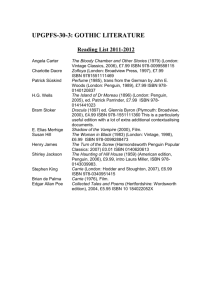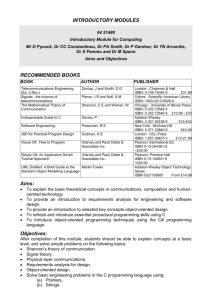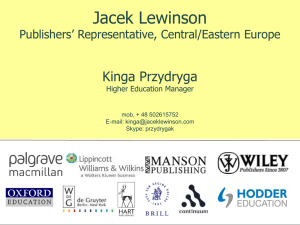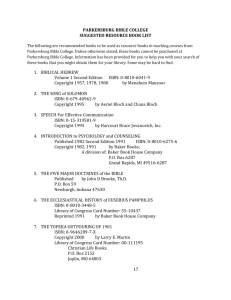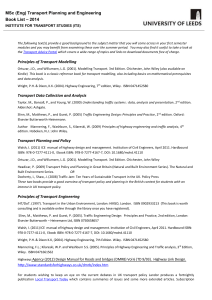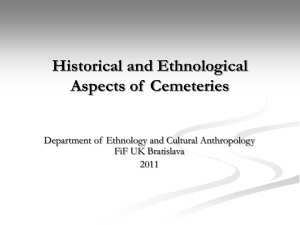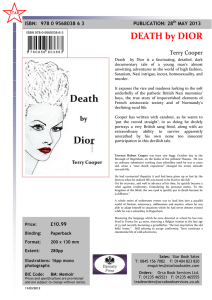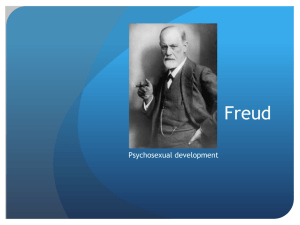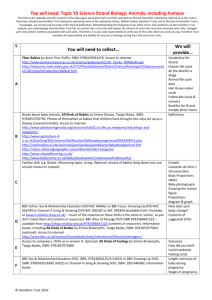Robert J. Witheridge, Ph.D. Assistant Professor of Conflict
advertisement
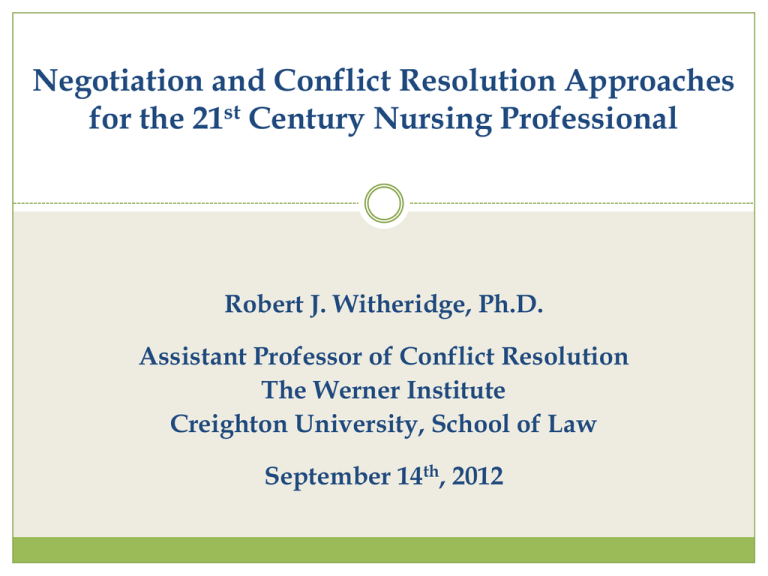
Negotiation and Conflict Resolution Approaches for the 21st Century Nursing Professional Robert J. Witheridge, Ph.D. Assistant Professor of Conflict Resolution The Werner Institute Creighton University, School of Law September 14th, 2012 Faculty Disclosure Robert J. Witheridge, Ph.D. Dr. Witheridge has listed no financial interest/arrangement that would be considered a conflict of interest. Introduction Negotiation and Conflict Resolution 21st Century Framing of Conflict and Communication Collaborative Negotiation in a Health Care Environment Diverse Modes of Conflict Resolution Conflict Resolution Research: Organizational Conflict Reflective Communication Techniques Negotiation and Conflict Resolution Individual Conflict Mode Identification Leveraging Diverse Stakeholder Relationships Effective and Strategic Communication The Nature of Power in the Workplace Organizational and Structural Considerations Modes of Conflict Resolution Example: Modes of Conflict Resolution Competing: “I value the point being made more than our relationship.” “It's them or me.” “I've got to win this one!” “I'm sure they will see it my way if they just think about it.” “I know I'm right.” This is the “I win, you lose” position. Accommodating: “I value our relationship more than this point.” “Let's just get this over with so we can get on to other things.” “This tension is very uncomfortable. I'll just do what they want.” “Fine I give in, have it your way.” “I lose, you win.” Avoiding: “I will be quiet and listen.” “It's not that big a deal.” “I'd rather just forget it.” “It's not worth the trouble.” “What difference could I make anyway?” “I lose, you lose.” Compromising:“This isn't important enough to fight over.” “I don't want to be unreasonable.” “If I give her this, maybe she'll give me that.” “We could both live with that.” Collaborating: “I'm sure if we work together we can come up with a better answer than either of us individually.” “I'm not giving in yet, but I am willing to hear your opinion, and give you mine.” “I win, you win.” 4.00 3.00 2.00 4.65 4.65 4.64 4.57 4.51 4.46 4.40 4.38 4.22 4.18 4.17 4.17 3.96 3.92 3.90 3.79 3.69 3.63 3.53 3.52 3.51 3.50 3.49 3.42 3.26 3.23 3.20 3.18 3.17 3.17 3.03 2.98 2.95 2.94 2.89 2.81 2.81 2.70 2.69 2.66 2.60 2.49 2.47 2.45 2.42 2.34 2.20 2.13 2.11 2.08 2.07 2.00 1.91 1.85 1.74 1.67 1.66 1.64 1.44 1.40 5.00 Compassion Compromise Clear Communication Collaboration Compliance Stress Acceptance Frustration Sincerity Control Enhanced Reasoning Focused Concentration Calmness Diplomacy Excitement Increased Competition Increased Confidence Anxiety Anger Nervousness Fatigue Headaches Empowerment Muscle Tension Increased Heart Rate Increased Perspiration Sleep Loss Decrease in Affection Avoidance Vulnerability Elevated Blood Pressure Facial Redness Fear Excessive Warmth Excessive Appetite Neck Stiffness Pleasure Gender Role Strain Excessive Sleep Irrationality Depression Back Pain Emotional Numbness Appetite Loss Gastrointestinal Discomfort Generalized Body Pain Nausea Dehydration Sudden Coldness Dry Mouth Muscle Relaxation Dizziness Joint Stiffness Memory Loss Faintness Impaired Breathing Physical Numbness Body Tremors Rash Hives Responses to Organizational Conflict Ranked Psychological and Psychosomatic Factors 6.00 1.00 Negotiation Styles and Concepts Distributive Negotiation Integrative Negotiation Reflective Listening BATNA WATNA MLATNA Example: Communication Competency Approachability Unskilled: May be a poor listener or appear uninterested; may be tense Skilled: Builds rapport well; puts others at ease. Overused Skill: May spend too much time building rapport with others; may have too strong a desire to be liked Adapted from: Lombardo, M. M., & Eichinger, R. W. (2006). FYI, for your improvement: A guide for development and coaching; for learners, managers, mentors, and feedback givers (4th ed.). Minneapolis, MN: Lominger Limited, Inc. [ISBN: 9780974589237] Questions and Comments Questions? Comments? Thank you for your participation. Robert J. Witheridge, Ph.D. © 2012 References Becker, B. E., Huselid, M. A., & Ulrich, D. (2001). The HR Scorecard: Linking people, strategy, and performance. Boston, MA: Harvard Business School Press. [ISBN: 9781578511365] Boulding, K. E. (1990). Three faces of power. Newbury Park, CA: Sage Publications, Inc. [ISBN: 9780803938625] Charan, R., Drotter, S., & Noel, J. (2001). The leadership pipeline: How to build the leadership-powered company. San Francisco, CA: Jossey-Bass. [ISBN: 9780787951726] Conaty, B., & Charan, R. (2010). The talent masters: Why smart leaders put problems before numbers. New York, NY: Crown Business. [ISBN: 9780307460264] Gawande, A. (2009). The checklist manifesto: How to get things right. New York, NY: Metropolitan Books. [ISBN: 9780805091748] Katz, N. H., & Lawyer, J. W. (1992). Communication and conflict resolutions skills. Dubuque, IA: Kendall/Hunt Publishing Company. [ISBN: 9780840337108] References (cont.) Korobkin, R. (2002). Negotiation theory and strategy. New York, NY: Aspen Publishers, Inc. [ISBN: 9780735527706] Kritek, P. B. (2002). Negotiating at an uneven table: Developing moral courage in resolving our conflicts (2nd ed.). San Francisco, CA: Jossey-Bass. [ISBN: 9780787959371] Lombardo, M. M., & Eichinger, R. W. (2006). FYI, for your improvement: A guide for development and coaching; for learners, managers, mentors, and feedback givers (4th ed.). Minneapolis, MN: Lominger Limited, Inc. [ISBN: 9780974589237] Studer, Q. (2008). Results that last: Hardwiring behaviors that will take your company to the top. Hoboken, NJ: John Wiley & Sons, Inc. [ISBN: 9780471757290] Toogood, G. N. (2005). The articulate executive in action: How the best leaders get things done. New York, NY: McGraw-Hill. [ISBN: 9780071457880] Wartenberg, T. E. (1990). The forms of power: From domination to transformation. Philadelphia, PA: Temple University Press. [ISBN: 9780877229056]

